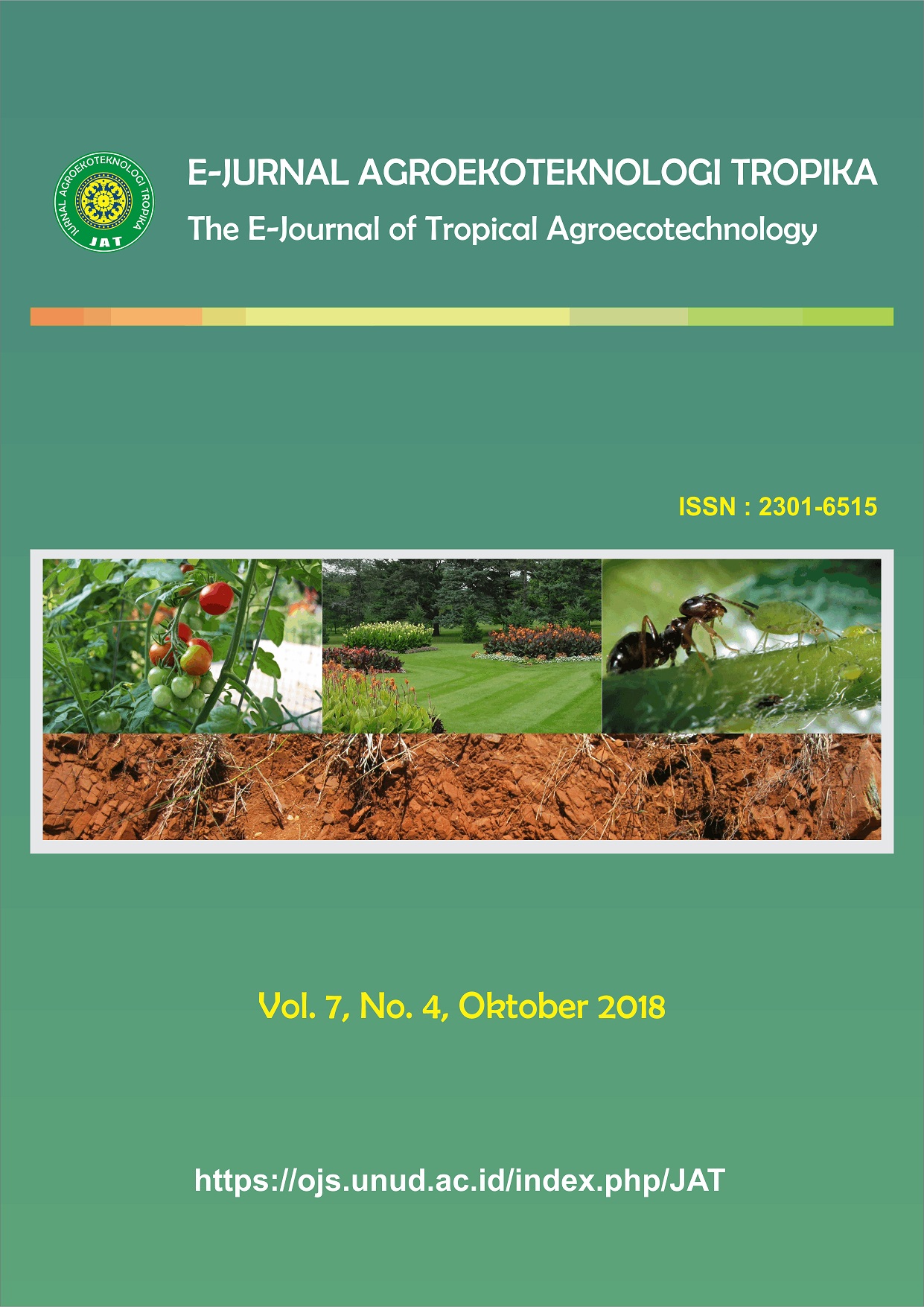Pengaruh Perlakuan Konsentrasi Kalsium Klorida (Cacl2) dan Suhu Penyimpanan terhadap Fisikokimia Buah Salak Bali (Salacca zalacca)
Abstract
Effect of Calcium Chloride Concentration (CaCl2) and Storage Temperature on Physico-Chemical of Salacca zalacca Fruit
This study aims to know the effect of calcium chloride (CaCl2) and determine the best concentration of calcium chloride and storage temperature on physico-chemical salak fruit. The research method used was split plot design which consisted of two treatments that are concentration of calcium chloride (CaCl2) (sub plot) with four levels; 0%, 9%, 12% and 15% storage temperature (main plot) with two levels; 28±2oC and 15± 2oC. The observation included weight loss, hardness, respiration rate, total dissolved solids, total acid content, vitamin C content, pH test, organoleptic test and shelf life. The result showed that storage of salak fruit with application of calcium chloride had the lowest respiration rate at temperature 28±2oC and 15±2oC. The treatment had the lowest respiration rate was concentration of calcium chloride 12% with the lowest respiration rate ( 2,54 ml/kg.hour of O2 and 2,45 ml/kg.hour of CO2). The concentration of chloride at 12% and storage at temperature 15±2oC was the best treatment to maintain physico-chemical characteristics with parameters wight loss, hardness, total dissolved solids, total acids content, pH test, and shelf life. Organoleptic test showed that a combination of concentration of calcium chloride 12% with storage temperature of 15±2°C have a level of acceptance that are favored by panelists. Calcium chloride of 12% extended the shelf life of salak fruit for 7 days at 28±2oC and 11 days at a temperature 15±2oC, respectivly.



